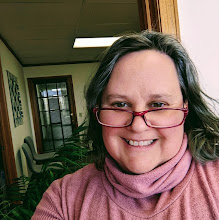What Exactly Is An Estate Plan?
By Melinda Gustafson Gervasi
February 28, 2025
“So, what exactly is an estate plan, and do I need one?” asked the client seated across from me earlier this week. “Um, my life is really pretty simple…do you think I need something like that?” they added.
Crown - Copenhagen, Denmark, Image by M. Gustafson Gervasi
My response was a simple “Yes”. To me an estate plan means preparing for illness, death, and taxes. It may not look like the estate plan used by the rich and famous, but it will address preparing for illness and death”
Here are common types of documents that make up an estate plan:
- Power of Attorney for Finances is a document that allows another person to handle financial tasks and decisions, such as banking, taxes, real estate, legal actions, and professional assistance if you are alive but too sick to act.
- Power of Attorney for Health Care – is a document that gives someone else the power to make health care decisions for you if you are unable to do so yourself. For example, consenting to surgery, coordinating in home health care, or securing long-term care.
- Advance Directive (also known as a Living Will) is a document that allows you to express your wishes about feeding tubes and other life sustaining procedures if you are in a persistent vegetative state or are terminally ill and the physicians do not think you will recover.
- Authorization of Final Disposition is a government form that allows you to designate a person to make burial and funeral arrangements as well as express your intention for cremation or green burial. In Wisconsin, when you die your powers of attorney end and our statutes assume your next of kin will make burial decisions. This may not mirror your wishes, especially if you are in a committed relationship but not legally married.
- Beneficiary designations are labels you place on assets that direct the assets distribution at your death. You can create these for life insurance, retirement accounts, pensions and annuities with a death benefit, financial investments (brokerage, HSA, money market, etc), standard bank accounts such as checking, savings, and CDs, as well as real estate in some states (in Wisconsin it is called a Transfer on Death Deed).
- A will is a legal document that facilitates probate (a will does not avoid probate). A will tells the court who will be in charge of administering your estate (called an Executor in many states; in Wisconsin the role is called Personal Representative); nominates guardians for any of your minor children; and distributes property that did not have a co-owner or named beneficiary.
- Living Revocable Trust is an instrument that you create during your lifetime to hold your assets, and then upon your death the instrument states where the assets held in trust shall be distributed. This designation means they pass outside of the probate process. They are very useful in states with high probate fees.
The expression Estate Plan may come off as highfalutin; do not let it deter you from the important work of creating a plan for illness and death. Without legal documents in place, a sudden illness or death can cause chaos on top of grieving. Make the time to make a plan, then put it into a legal binding format that conforms to the laws of your state of residence.
Thank you for reading. As a reminder, a blog is not legal advice. It is meant to spark thought and reflection. Please seek legal advice from a licensed attorney in your state of residence. Make sure to receive future posts; enter your email in the upper right corner to receive notifications when new material is posted. Thanks again for reading, be well!





